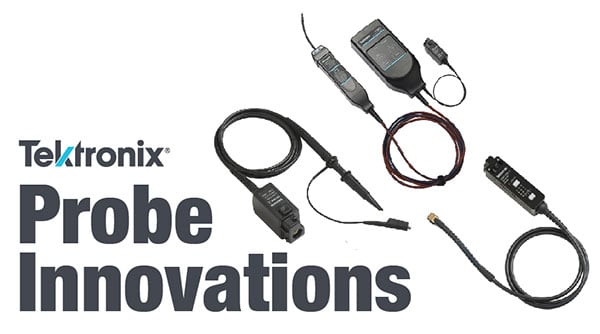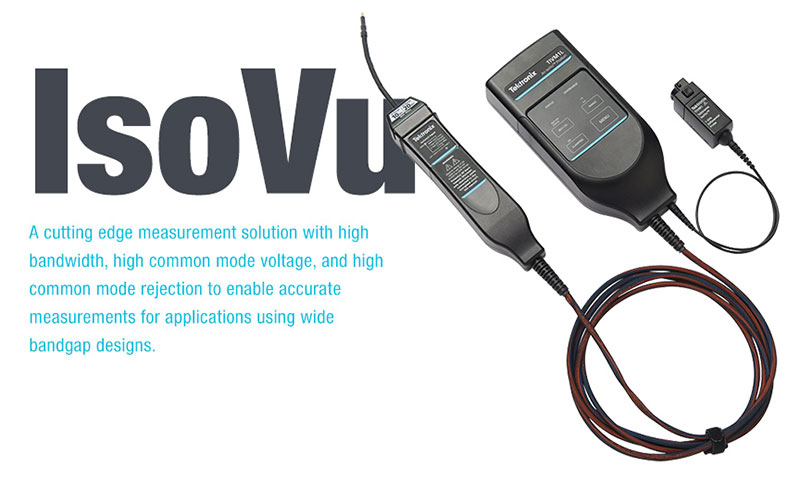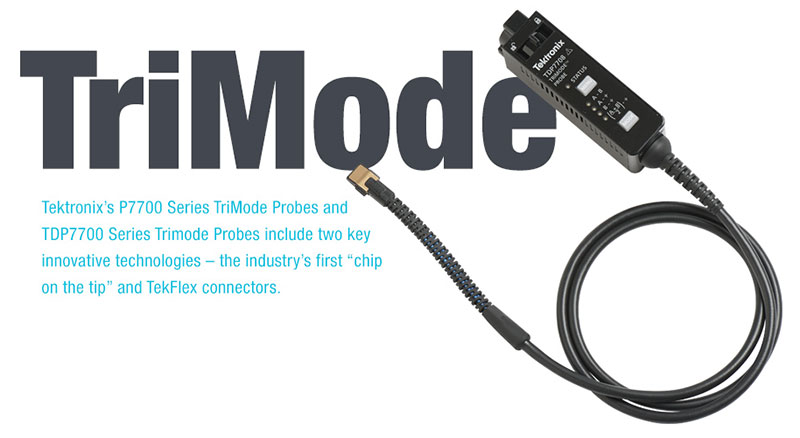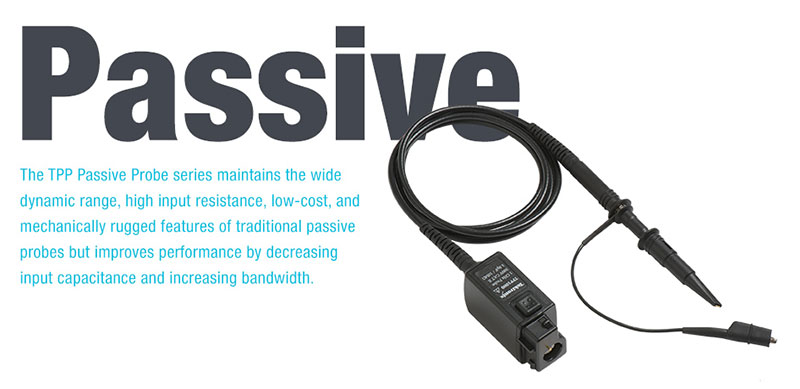

Tektronix exists to help engineers innovate – giving them high-performance, reliable tools to test and measure the key parameters of their designs.
Over the last 25 years, dramatic advances in technology have demanded more powerful equipment for developing high-complexity designs, particularly when it comes to oscilloscope probes. We’re proud to have met that demand with 73 unique patents on probes in eight different categories. Check out our infographic on those patents here, and read on for three examples of our oscilloscope probe innovations.
IsoVu™ Probes

Recent advancements in power electronics and power supply designs have proven traditional scope probes to be inadequate for conducting differential measurements on wide bandgap MOSFETs. As an answer to these challenges, Tek developed IsoVu Probes – a cutting edge measurement solution with high bandwidth, high common mode voltage, and high common mode rejection to enable accurate measurements for applications using wide bandgap designs.
The IsoVu sensor head, which connects to the test point, has complete electrical isolation and is powered over one of the optical fibers. The probe tip is designed to be shielded all the way to the tip and minimize parasitics. As a result, IsoVu probes not only offer significant advantages for power conversion testing but are also well suited for stringent EMI and ESD test requirements.
Unlike electrical probes that should be kept as short as possible, the IsoVu fiber optics cable allows for remote measurements that can prove very useful when the DUT and oscilloscope should be kept some distance apart.
The IsoVu system works with most Tektronix scopes, but the best combination comes when it is used with the 12-bit vertical resolution of the new 4, 5, and 6 Series MSO oscilloscopes that offer up to 8 analog channels in a single unit and advanced power application software. This combination enables designers to finally take advantage of everything the wide bandgap materials have to offer for DC to DC power converters, but also represents a significant advance for 3-phase power electronics, power supply design, automotive electronics and much more.
P7700 and TDP7700 Series TriMode™ Probes

Test engineers working with new semiconductor and hardware designs in the mobile and enterprise computing segments face a variety of challenges. Battery powered mobile devices often run with lower voltage logic levels that make their acquisition and analysis more difficult. And semiconductor devices designed for low power consumption can operate with their I/O in a high impedance, unterminated state. Both of these challenges require a low noise and high impedance acquisition system.
In response to these challenges, Tektronix introduced the P7700 Series TriMode Probes and TDP7700 Series Trimode Probes. These new probes include two key innovative technologies – the industry’s first “chip on the tip” and TekFlex connectors.
By including an active input buffer on the solder tip, the P7700 minimizes signal loss, capacitance, and added noise. Built using IBM’s SiGe 8HP process, the probe tip amplifier is located less than 4 mm from the DUT connection. Not only does this innovation offer outstanding electrical performance, but it is also ESD tolerant and able to operate over an industrial temperature range of -40°C to +85°C.
On the mechanical side, the P7700 Probe’s TekFlex™ connector combines high-speed differential connections and low-speed data and power connection all in one. With this connector design, the active chip-on-the-tip accessories receive power and control and connect via a high-speed differential pair to the oscilloscope’s input. The TDP7700 Series has many of the same attributes and was introduced recently to support oscilloscopes like the 6 Series MSO which use the TekVPI probe interface.
Low-Capacitance, 1GHz Passive Probes

Traditional passive probes have several advantages – they are inexpensive, mechanically rugged, have high input resistance and have wide dynamic range. But they also have disadvantages like low bandwidth, high input capacitance, manual low frequency compensation and required manufacturer’s service for high frequency compensation.
To overcome these disadvantages, Tektronix developed the TPP Passive Probe Series, which kept the benefits of traditional passive probes but with performance similar to an active probe.
These high-impedance (10 MΩinput resistance) passive voltage probes limit the effect on circuits with capacitive loading of just 3.9 pF at the probe tip, a major breakthrough in passive probe technology. Competitive passive voltage probes have at least 9.5 pF input capacitance.
The TPP passive probes also deliver 1 GHz of bandwidth. Until now, high-impedance passive probes offered a maximum of 500 MHz bandwidth. With twice the bandwidth and half the capacitive loading, the TPP Series probes deliver more accurate signal capture.
Finally, Tektronix passive probes replace manual low frequency compensation and required manufacturer’s service for high frequency compensation by automating both processes.
Conclusion
These have been just a few among many examples of Tektronix’s probe technology innovations. We’re proud of our long history creating cutting-edge tools to support cutting-edge engineers.
For more information on Tektronix’s full portfolio of probes, visit our probes and accessories page. If you need help finding the probe best suited for your work, check out our probe selector guide.


